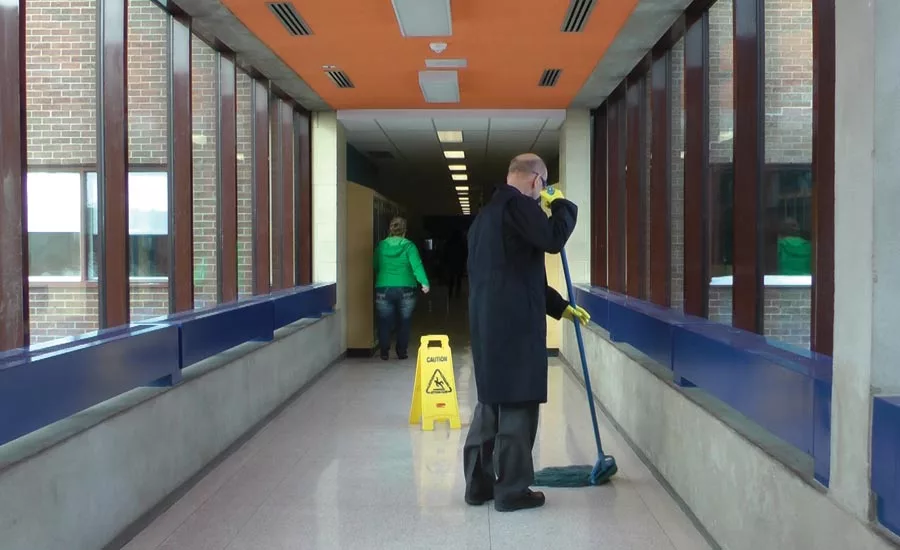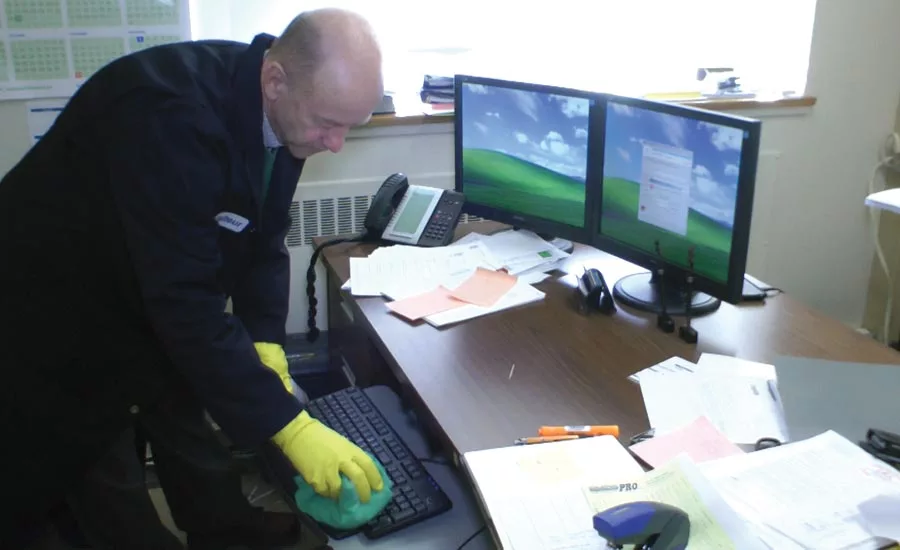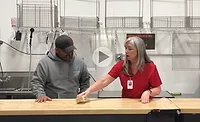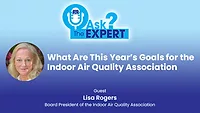What are VOCs?

Photos courtesy of Mike Watt

Photos courtesy of Mike Watt

Photos courtesy of Mike Watt
We’ve all heard about volatile organic compounds (VOCs). Restoration and remediation professionals use or encounter them in scores of different products every day. These include cleaning solutions, adhesives, aerosols, paints, fabrics, carpets, and building materials.
However, there is more to VOCs than many of us may realize, and the goal of this article is to provide the insight we need to keep ourselves, our customers, and the environment healthy.
The first thing we need to do is define VOCs. As stated by the Environmental Protection Agency (EPA): Volatile organic compounds (VOCs) are emitted as gasses from certain solids or liquids. VOCs include a variety of chemicals, some of which may have short- and long-term adverse health effects. Concentrations of many VOCs are consistently higher indoors (up to ten times higher) than outdoors. VOCs are emitted by a wide array of products numbering in the thousands.
One reason manufacturers use VOCs in their products is simply that they often make a product function better in one way or another. But they use VOCs at a price. Again, referring to the EPA, these are some of the health impacts of VOCs:
- Eye, nose, and throat irritation
- Headaches, loss of coordination, and nausea
- Damage to liver, kidney, and central nervous system
- Allergic skin reaction
- Breathing problems
- Cognitive problems
In addition, some VOCs have been found to cause cancer in animals or are suspected of causing or known to cause cancer in humans.
We should note that the potential harm VOCs can do depends on variables including whether a person is indoors or outdoors when exposed to VOCs and the length and concentration of the exposure.
Many green-certified products will proudly indicate on their labels and marketing materials that they include few or no VOCs. However, new evidence suggests we need to revisit those claims because it appears they are not always as accurate as we may have hoped.
VOCs and Green-Certification History
When the first green-certification organizations were created in the late 1980s, the big concern then, as today, was the impact VOCs were having on the atmosphere. We can view ground-level VOCs as smog. Then, the VOCs drift into the upper atmosphere, about 10 to 15 miles from the Earth. When they do, they can damage the ozone layer covering the Earth. We refer to these as ozone-depleting VOCs. The result: scores of ultraviolet B rays reach Earth. These rays can cause skin cancer and cataracts in humans and harm animals and plant life.
Thankfully, for the most part manufacturers are concentrating on removing VOCs from products. Here is the problem. The claim by a manufacturer that a green-certified product has low or no VOCs often means there are no ozone-depleting VOCs in the product, as previously mentioned. But this does not necessarily mean there are no VOCs in the air that restoration and remediation workers breathe when they work.
Dealing with the Oversight
We cannot refer to this as a form of “greenwashing,” where a manufacturer makes a claim that is not proven. Remember: these are products that have been certified by leading and respected certification organizations.
Now that they are aware of this issue, some manufacturers are taking steps to help ensure both the ozone layer and the air we breathe are free of VOCs by having products “dual certified.” This is a relatively new term, but it means exactly what you think: The product is certified twice.
This time, however, one certification organization verifies the product meets green standards and criteria for protecting the environment, and another organization verifies it does not harm the air being breathed.
For example, let’s say Green Seal certifies a cleaning solution and verifies through independent testing that the product meets green standards. The certification also states that the product contains few, if any, VOCs, but as we now know this means ozone-depleting VOCs.
Now the same manufacturer takes that product to UL Environment to be GREENGUARD certified. This certification organization focuses on emissions and tests the product to certify that it has few, if any, emissions that can harm health and indoor air quality.
Dual certification is likely something we will see more of in the future. One reason for this is today’s green-certification organizations have begun to specialize in different environmental areas. Some are more focused on sustainability, others on “cradle-to-grave” issues, and still others on indoor air quality.
It appears this is all part of the green “journey” we have been experiencing over the past three decades. We continue to learn more about products and their impact on human health. Ultimately, the result is that more products are being introduced that are safer to use and more protective of human and environmental health while still providing the performance needed by the user.
Looking for a reprint of this article?
From high-res PDFs to custom plaques, order your copy today!





